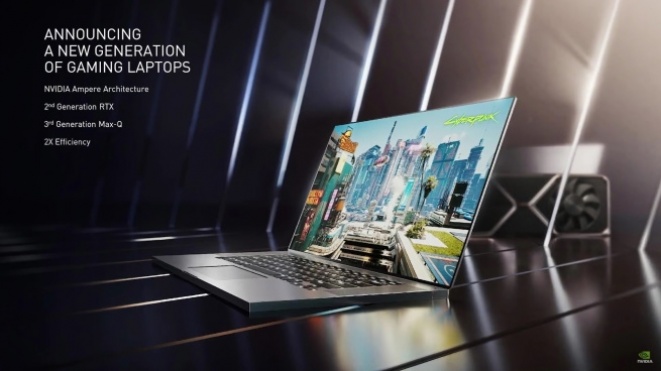How to Optimize Windows for Gaming in 2024
For gamers, every second counts. If you're looking to get the best performance out of your Windows PC in 2024, you're in the right place. This guide will show you how to optimize your system for a smoother and more enjoyable gaming experience. Let's dive into the tips and tricks to make your games run better than ever.
Key Takeaways
- Enable Game Mode to improve gameplay by prioritizing gaming resources.
- Keep your graphics drivers updated for the best performance.
- Adjust in-game graphics settings to balance quality and speed.
- Close unnecessary background apps to free up system resources.
- Optimize power settings to ensure your PC runs at its best during gaming.
Enable Game Mode for Smoother Gameplay
How to Turn On Game Mode
Turning on Game Mode is super easy. Just press Windows + I to open Settings. Then, go to Gaming and click on Game Mode. Finally, switch the toggle to On. With Game Mode enabled, Windows now has the ability to run games like on consoles, addressing the issue of switching between controllers and keyboard/mouse for gaming.
Benefits of Game Mode
Game Mode helps your PC focus on smooth gameplay by optimizing resources and frame rate. This means less delay when you press buttons and overall better gaming performance. Plus, it automatically halts or reduces the priority of many background tasks, giving you a more consistent gaming experience.
Troubleshooting Game Mode Issues
If Game Mode isn't working as expected, make sure your Windows is up to date. Sometimes, the latest updates are needed for Game Mode to function properly. If you still face issues, try turning Game Mode off and on again. Also, check if other background apps are causing problems.
Update Your Graphics Drivers Regularly

Keeping your graphics drivers up to date is super important for a smooth gaming experience. Outdated drivers can cause bugs, glitches, and even system crashes. So, let's dive into how you can keep your drivers updated and your games running smoothly.
Adjust In-Game Graphics Settings

Optimal Settings for Performance
When it comes to getting the best performance out of your games, tweaking the in-game graphics settings is key. You can usually find these settings in the game's main menu under Options, Graphics Settings, or Video. Windows 11 brings new optimizations for CPU, memory, and storage, enhancing performance compared to Windows 10. Start by lowering settings like resolution, motion blur, and anti-aliasing to see immediate improvements.
Balancing Quality and Performance
Finding the right balance between quality and performance can be tricky. Some games offer a ton of options, while others are more limited. Focus on adjusting GPU-intensive settings like ray tracing and volumetric fog. If your game looks good but runs poorly, try lowering these settings first. Remember, it's all about finding what works best for your system.
Common Graphics Settings Explained
Here's a quick rundown of common graphics settings you might encounter:
- Resolution: Higher resolutions look better but can slow down performance.
- Anti-Aliasing: Smooths out jagged edges but can be resource-heavy.
- V-Sync: Prevents screen tearing but may introduce input lag.
- Texture Quality: Higher settings make textures look better but use more memory.
- Shadow Quality: Better shadows look nice but can be demanding on your GPU.
Tweak your graphics card settings too. Modern graphics cards have their own settings you can adjust to optimize your system for gaming. Check your settings for Ambient Occlusion, Anisotropic Filtering, and DSR.
By experimenting with these settings, you can find the perfect balance for your gaming experience.
Disable Unnecessary Background Apps
Background apps can sneakily start up with your PC and impact your gaming experience. Some of these apps can use a lot of your system's resources, causing frame-stuttering or even crashes. Let's make sure your PC is running only what it needs for the best gaming performance.
Optimize Power Settings for Gaming
When it comes to How to Optimize Windows for Gaming, power settings play a crucial role. Let's dive into how you can tweak these settings for the best gaming experience.
Choosing the Best Power Plan
First things first, you need to set your power mode to 'Best performance'. This simple change can make a big difference. Just click on the battery icon in the system tray and drag the slider to 'Best performance'. This will give your PC all the power it needs to run games smoothly.
Customizing Power Settings
You can also customize your power settings for even better performance. Here are some steps you can follow:
- Open Control Panel and go to 'Power Options'.
- Select 'Create a power plan' and choose 'High performance'.
- Click 'Next' and customize the plan settings according to your needs.
- Make sure to disable any power-saving features that could slow down your system.
Impact of Power Settings on Performance
Optimizing your power settings can significantly improve your gaming experience. It can increase frames per second (FPS) and reduce input lag. However, keep in mind that this might make your system run hotter, so ensure you have proper cooling.
I've fixed issues with slowing down AMD Ryzen processor on Windows 11 by tweaking power settings. Microsoft's repair worsened the situation, but these gaming tweaks saved the day.
By following these steps, you'll be well on your way to a smoother and more enjoyable gaming experience.
Manage Windows Updates Wisely
When it comes to gaming, Windows updates can be a double-edged sword. While your first reaction might be to completely turn off automatic updates, I would advise against it. Windows auto-updates are there not only to ruin your raid, but also to protect your system, keep it up-to-date, and working optimally.
Scheduling Updates
One smart way to handle updates is by setting your active hours. You can specify your gaming and working schedule in Windows and prevent the OS from downloading updates during those times. Windows will then use your non-active hours to update and restart your system.
Pausing Updates During Gameplay
If you’re in the middle of an intense gaming session, the last thing you want is an update interrupting you. You can pause updates temporarily to ensure a smooth gaming experience. Just go to Windows Update settings and hit the pause button.
Rolling Back Problematic Updates
Sometimes, updates can cause more harm than good. If you notice any issues after an update, you can roll it back. Go to the update history in your settings and choose to uninstall the problematic update. This helps reduce interruptions and potential system load.
Use Performance Monitoring Tools

Best Tools for Monitoring Performance
When it comes to keeping an eye on your system's performance, there are some great tools out there. MSI Afterburner is a favorite among gamers for its detailed monitoring and overclocking features. Another solid choice is HWMonitor, which gives you a clear view of your system's temperatures, voltages, and fan speeds. If you're looking for something more advanced, try out AIDA64; it offers in-depth hardware analysis and diagnostics.
Interpreting Performance Data
Understanding the data these tools provide can be a bit tricky at first. Look out for key metrics like CPU and GPU usage, temperatures, and frame rates. High temperatures can indicate that your cooling system isn't doing its job well. If you notice your CPU or GPU usage hitting 100% often, it might be time to upgrade your hardware or tweak your settings.
Making Adjustments Based on Data
Once you've gathered enough data, you can start making informed adjustments. For example, if your GPU is running hot, consider improving your cooling system. If your CPU usage is consistently high, you might want to close unnecessary background apps or even upgrade your CPU. The goal is to find a balance that gives you the best performance without overheating your system.
Regularly monitoring your system's performance can help you catch issues before they become serious problems. It's a proactive way to ensure your gaming experience remains smooth and enjoyable.
Clean Up and Defragment Your Hard Drive
Whether you’re using a hard disk drive or an SSD, cleaning up your drive can boost your computer and optimize Windows 11 for gaming. Disk fragmentation can lead to a significant performance hit, especially with games, as the hard disk will need to collect all the fragmented portions before it can process the entire file.
Optimize Network Settings for Online Gaming

Reducing Latency
When it comes to online gaming, stable internet is essential. One of the first things you can do to reduce latency is to use a wired connection. Ethernet cables provide a more reliable and faster connection compared to Wi-Fi. If you must use Wi-Fi, make sure you're connected to a 5GHz or 6GHz band, as these are less crowded and offer better performance than the older 2.4GHz band.
Choosing the Right DNS Server
Another way to optimize your network settings is by choosing the right DNS server. Sometimes, your ISP's default DNS server may not be the fastest option. You can use tools like DNS Benchmark to find the fastest DNS servers for your location. Once you have the results, you can change your DNS settings in your network adapter properties.
Using a Wired Connection
For the best gaming experience, a wired connection is the way to go. Wi-Fi can be unstable and prone to interference, which can cause lag and disconnections. By using an Ethernet cable, you ensure a more stable and faster connection, which is crucial for online gaming. If you're experiencing high ping or lag, switching to a wired connection can make a significant difference.
If you're serious about online gaming, don't underestimate the impact of a stable internet connection. A wired connection can be a game-changer, reducing lag and improving your overall gaming experience.
Adjust Visual Effects for Better Performance
When it comes to gaming, every bit of performance counts. One way to squeeze out a bit more power is by adjusting the visual effects in Windows. These effects look cool, but they can slow down your system. Let's tweak them for better gaming performance.
Disabling Fancy Animations
Fancy animations in Windows can be a real drag on your system. To turn them off:
- Press
Win + Rto open the Run dialog. - Type
sysdm.cpland hit Enter. - Go to the
Advancedtab and click onSettingsunder Performance. - Select
Adjust for best performanceto disable all animations.
Tweaking Advanced System Settings
For more control, you can manually choose which effects to disable:
- Follow the steps above to open the Performance Options menu.
- Instead of selecting
Adjust for best performance, chooseCustom. - Uncheck the boxes for animations you don't need, like
Animate windows when minimizing and maximizing.
Using Performance Options Menu
The Performance Options menu is your best friend for these tweaks. It lets you pick and choose which visual effects to keep and which to ditch. This way, you can find a balance that works for you.
By turning off unnecessary visual effects, you give your graphics card more room to handle the demanding visuals of games. This is especially useful for older cards.
So, go ahead and make these changes. Your games will thank you!
Install and Use Game Boosting Software
Top Game Boosting Apps
When it comes to getting the most out of your gaming rig, using game boosting software can make a big difference. Here are some of the best game booster software you can use in 2024 according to me:
- Advanced System Optimizer
- Razer Cortex
- IObit Game Booster
- Wise Game Booster
- Smart Game Booster
How Game Boosters Work
Game boosters work by optimizing your system's performance. They do this by closing unnecessary background apps, freeing up RAM, and prioritizing your game's processes. This can lead to smoother gameplay and potentially higher FPS.
Potential Drawbacks of Game Boosters
While game boosters can be helpful, they aren't perfect. Sometimes, they might close apps you actually need or cause system instability. It's important to monitor their effects and adjust settings as needed.
Using game boosting software can be a quick way to enhance your gaming experience, but always keep an eye on how it affects your system overall.
Conclusion
Optimizing Windows for gaming in 2024 doesn't have to be a headache. With a few tweaks here and there, you can squeeze out every bit of performance from your system. Whether it's enabling Game Mode, updating your drivers, or adjusting in-game settings, these small changes can make a big difference. So, take some time to fine-tune your setup and get ready to enjoy smoother, faster gameplay. Happy gaming!
Frequently Asked Questions
What is Game Mode in Windows?
Game Mode is a feature in Windows that helps improve gaming performance by allocating more system resources to your game and minimizing background tasks.
How do I update my graphics drivers?
You can update your graphics drivers by visiting the manufacturer's website, downloading the latest drivers, and following the installation instructions. Alternatively, you can use driver update software to automate the process.
What are the best in-game graphics settings for performance?
The best settings for performance usually involve lowering the resolution, turning off features like anti-aliasing, and reducing texture quality. This can help improve frame rates and reduce lag.
How can I identify apps that use a lot of resources?
You can use the Task Manager in Windows to see which apps are using the most CPU, memory, and disk resources. Look for apps with high usage and consider closing them while gaming.
What power plan should I use for gaming?
For gaming, it's best to use the 'High Performance' power plan. This setting ensures that your computer uses more power to deliver better performance.
How do I schedule Windows updates?
You can schedule Windows updates by going to Settings > Update & Security > Windows Update and selecting 'Schedule the restart.' Choose a time that doesn't interfere with your gaming sessions.
What are some good tools for monitoring gaming performance?
Some popular tools for monitoring gaming performance include MSI Afterburner, Fraps, and Windows Game Bar. These tools can help you track frame rates, CPU usage, and GPU performance.
Why should I defragment my hard drive?
Defragmenting your hard drive can help improve your computer's speed and performance by organizing fragmented data, making it easier for the system to access files quickly.












